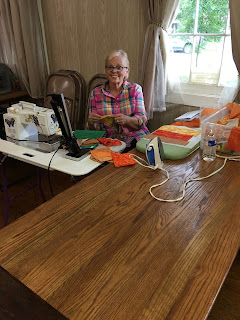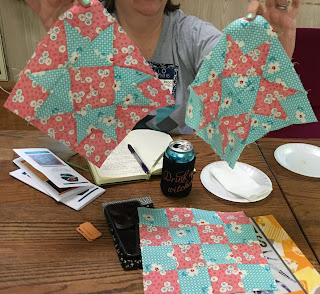The whole idea of someone selecting the color of the year
and impacting art, fabric, clothing and just about everything in the world,
seems strange to me. I decided to try to better understand by doing some
research.
First I wanted to know Who or What is Pantone. Where did
this company come from? The website says “In 1963, Lawrence Herbert, Pantone's
founder, created an innovative system of identifying, matching and communicating
colors to solve the problems associated with producing accurate color matches
in the graphic arts community. His insight that the spectrum is seen and
interpreted differently by each individual led to the innovation of the PANTONE
MATCHING SYSTEM®, a book of standardized color in fan format.
Since then, Pantone has expanded its color matching system
concept to other color-critical industries, including digital technology,
textiles, plastics, architecture and contract interiors, and paint." So, my
question is, what makes this company the leading authority on color and allows
them to select a “color of the year” that impacts so many industries.
I thought that perhaps they looked at what designers were
doing worldwide to see what colors were being used and then used that pallet to
identify what the popular color is. But that doesn't seem to be the case.
Their website says the color of the year is “A symbolic color selection; a color snapshot of
what we see taking place in our global culture that serves as an expression of
a mood and an attitude.”
This year’s color is greenery. It’s supposed to be a “bright
but calming symbol of new beginnings and a reconnection with nature.” I sure
don’t see that happening in my world.
Leatrice Eiseman, Executvie Director of the Pantone Color
Institute says, “Greenery bursts forth in 2017 to provide us with the
reassurance we yearn for amid a tumultuous social and political environment. Satisfying
our growing desire to rejuvenate and revitalize, Greenery symbolizes the
reconnection we seek with nature, one another and a larger purpose.”
I actually love their color choice and plan to use it a lot
in my quilts this year and will be happy to see it reflected in fabric. I also
agree with how they describe the color: “Greenery is a fresh and zesty yellow-green shade that evokes the first days
of spring when nature’s greens revive, restore and renew. Illustrative of
flourishing foliage and the lushness of the great outdoors, the fortifying
attributes of Greenery signals consumers to take a deep breath, oxygenate and
reinvigorate.”
Green has long
been a favorite of mine and my favorite green is a spring green, which to me
describes But the question remains, does the Pantone color of the year come
from what the world has already dictated. Or does Pantone’s selection of that
color make it become prevalent throughout the world. We may never know.
Pantone says
“color experts at the Pantone Color Institute comb the world looking for new
color influences. This can include the entertainment industry and films in
production, traveling art collections and new artists, fashion, all areas of
design, popular travel destinations, as well as new lifestyles, playstyles and
socio-economic conditions. Influences may also stem from new technologies,
materials, textures and effects that impact color, relevant social media
platforms and even up-coming sporting events that capture worldwide attention.”
Yet they also say “For 17 years, Pantone’s Color of the Year
has influenced product development and purchasing decisions in multiple
industries, including fashion, home furnishings and industrial design, as well
as product packaging and graphic design.”
So, maybe it works both ways. If you look at my stash, you’ll
see I’ve been collecting this spring green color for some time and there has
been no shortage of fabrics with this hue. But thanks to Pantone’s emphasis, I’ll
be using it more and more in the next year. What about you?
If you’ve never looked at the Pantone website, I highly
recommend a visit to: www.pantone.com. If nothing else, you’ll see some great color
combinations that you can experiment with in your next quilt. You're sure to find something you like. Here's a few:



















































